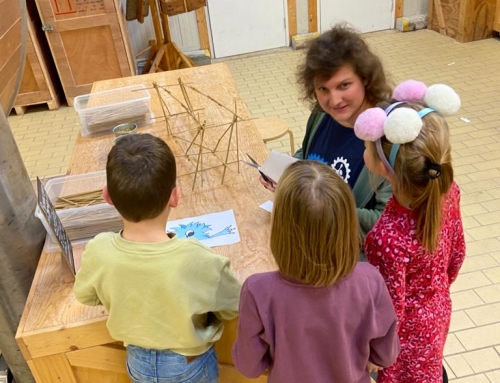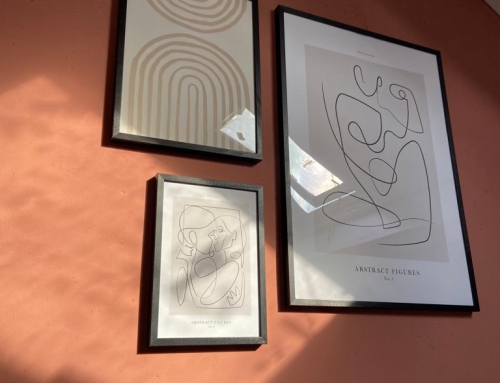In the previous blog, I wrote about the complex issue of Innovation Square, how design thinking can be an approach to deal with this complexity and how the liminal thinking theory and organisations as conversations metaphor can be relevant for Innovation Square. It is about dealing with different perspectives, finding common ground and I described the top-down vs bottom-up model in which I believe working bottom-up is the way to go. In this blog, I invalidate this top-down vs bottom-up model, you can read the society 3.0 theory and I will write about our bureaucratic society.
Structures
When looking at the top-down vs bottom-up model, it describes two different approaches of how to structure and manage an organisation. With a top-down approach, an executive decision-maker or ‘top person’ makes the decisions. With a bottom-up approach, a large number of people are working together which causes a decision. Both approaches have their benefits and disadvantages, working top-down is more efficient where bottom-up includes results in a better feeling for what is needed (Stewart, Manges, Ward, 2015). Nevertheless, I believe this model is not always relevant to our current society anymore. The model states that there always is an up, but society shows that an up/ top is not always needed. Nowadays, more and more organisations make use of a horizontal structure instead of a vertical/ hierarchic structure.

Therefore, the society 3.0 theory of Ronald van der Hoff fits current society better. This theory shows that society is moving from 1.0, institutes just sending information to individuals; to 2.0, an interaction between institutes and individuals; to 3.0 a network where individuals are integrated into institutions and where people constantly interact. Society 3.0 is a dynamic process in which collaboration, self-steering, knowledge exchange and serendipity are important. There is no top anymore and the link between institutes and individuals is closer. Nowadays, we are in the transition from society 2.0 to society 3.0. There are still a lot of organisations and institutes that work with a bureaucratic structure based on rules, procedures, shared responsibility, hierarchy and formal relations (Hoff, 2014).
Bureaucratic
Innovation Square is part of Breda University of Applied Sciences which is an educational system and subsidized by the government. In the Netherlands, universities of applied sciences are part of the semi-governmental organisations. The government decides the guidelines and conditions that directly influence the organisations. Semi-governmental organisations are part of the public sector, the public sector consists of all the institutes and organisations that act in the name of the government. For a long time, the government struggles with its organisation structure. In the past, they made use of a bureaucratic structure, in the 80s they tried to modernize it with the New Public Management (NPM) philosophy. NPM was the opposite of a bureaucratic system. Unfortunately, they found out that the opposite does not work in an early stage and again, the bureaucratic system was superior. Since 2000, the government makes use of the New Public Governance philosophy, which is the synthesis between NPM and bureaucratic in which collaboration, participation and coordination are central. This NPG philosophy fits society 3.0 because there needs to be an interaction between participants and hierarchy is less important (Dunleavy, 2006).
The public sector struggles with the complexity if they want to work with a bureaucratic structure or with an adhocratic structure. Nowadays, the structure is somewhere in between. We can link this to the society 3.0 theory, that shows that we are still in the transition from society 2.0 to society 3.0. Looking to the metaphor organisations as machines vs organisations as conversations, we tend to work with a structure based on collaboration and interaction (conversations) but we sometimes fall back into hierarchic structures where it is about making money and efficiency (machines). In my first blog, I write about system world and lifeworld and when I compare all these theories, I believe that there always is a struggle between system world and lifeworld.
Societal challenge
This struggle can be defined as the societal challenge of Innovation Square. Innovation Square asks for a living system that is based on relationships, interacting and communicating. Nevertheless, the BUas is part of the public sector and this sector tends to work with a bureaucratic structure. People of Innovation Square always have to argue their acts and deeds to the board of BUas and the board of BUas has to argue this too, in the end, the government. As Innovation Square, we cannot ignore the guidelines and conditions of the government. As well as that, does this mean that Innovation Square needs a bureaucratic structure as well? Or are there opportunities to deal with it and even change it? When observing the system of Innovation Square, there is a team who arrange and manage the so-called ‘community’. All inhabitants of Innovation Square ask this team for approval and permission and now I ask myself ‘do they see this team as the ‘up’? Innovation Square, wants that living system, wants an organisation as a conversation and wants a society 3.0 situation if they want this change is needed.
Behavioural change is needed and this change is not just needed at Innovation Square. It is needed in all organisations where they face the societal challenge of choosing the right structure. Especially, the institutes and organisations in the public sector face this challenge because they must always be accountable to the government and public, there are always rules, guidelines and restrictions. The government works as society 2.0 but this does not mean that they do not want to work as society 3.0. In the next blog, I will write more about this governmental change.
In addition to this, something important happened in the last couple of weeks. The whole world faces the Coronavirus and this virus led to a critical situation. Everybody is affected by this virus and not just physically. The economy, the educational system, the leisure sector, everything and everybody. People need to stay home, restaurants, bars, schools and cultural venues are closed and people are not allowed to meet each other. You can say that Coronavirus only have negative effects. Nevertheless, a lot of positive things also happen. People take care of each other, help each other, a lot of social initiatives evoke, voluntary work is booming and the whole world appreciate and empathize with everything and everybody who is affected by the virus or who is fighting the virus. System world is not working as they used to and this results in lifeworld flourishing. In the next blog, I will write more about this change and what it means for places like Innovation Square.





